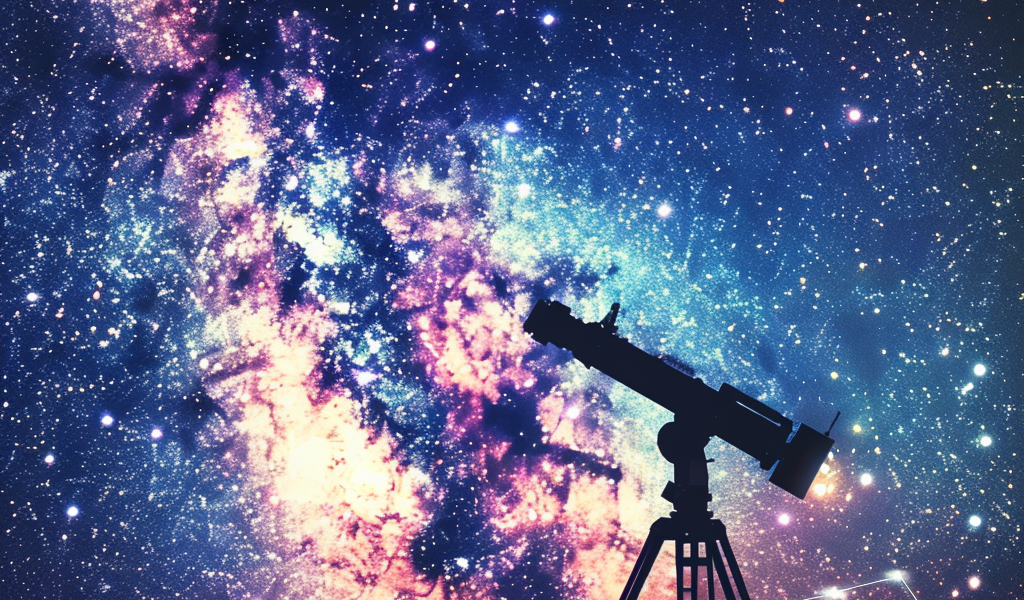Artificial Intelligence (AI) is increasingly becoming a pivotal tool in the field of astronomy, enabling researchers to delve deeper into the mysteries of the universe. With the advent of new telescopes and the subsequent surge in data generation, AI is stepping in to help scientists make sense of the vast amounts of information being collected. From classifying galaxies to analyzing exoplanet atmospheres, AI is revolutionizing how astronomers conduct their research.
One of the most notable projects utilizing AI is the Vera C. Rubin Observatory, set to be completed in January 2025. This state-of-the-art facility will conduct the Legacy Survey of Space and Time (LSST), which aims to image the entire night sky every few days for a decade. By the end of this ambitious project, it is expected to produce an astounding sixty petabytes of data. The sheer volume of information generated by the LSST is too vast for traditional methods of analysis, highlighting the need for AI’s data-crunching capabilities.
According to Daniela Huppenkothen, an astronomer and data scientist at the Netherlands Institute for Space Research, AI allows researchers to tackle problems that were previously deemed computationally prohibitive. The ability to sift through enormous datasets rapidly is one of AI’s most significant advantages. As new telescopes come online and existing ones continue to gather data, the astronomical community is beginning to realize the potential of AI in uncovering hidden patterns and insights.
NSF director Sethuraman Panchanathan emphasized the transformative impact AI could have on the field. He noted that the vast and rich data collected by the Vera C. Rubin Observatory and other large-scale astronomical projects cannot be fully explored using conventional methods. With AI, researchers—from students to seasoned scientists—will have innovative tools at their disposal to extract valuable insights, potentially leading to groundbreaking discoveries.
Machine learning, a specific subset of AI, is particularly popular among astronomers. While AI may appear intelligent, it fundamentally consists of algorithms designed to recognize patterns and improve their performance as they process more data. For the LSST, machine learning algorithms will assist in classifying galaxies based on their shapes. This task has traditionally relied on human researchers visually inspecting images, a process that is limited by human capabilities and time constraints.
Machine learning not only accelerates the classification process but also enhances accuracy. These algorithms can detect subtle features that may elude the human eye, such as faint wisps at the edges of a galaxy or dimmer galaxies that would otherwise go unnoticed. This capability is essential as astronomers aim to explore the universe’s complexities more comprehensively.
In addition to galaxy classification, AI is being employed in various other areas of astronomical research. For instance, researchers are using AI to identify solar flares and analyze the atmospheres of exoplanets. By employing machine learning techniques, scientists can automate the detection of solar activity, which is crucial for understanding space weather and its effects on Earth. Furthermore, AI can assist in the characterization of exoplanet atmospheres by analyzing spectroscopic data, helping to identify potential signs of habitability.
As the field of astronomy continues to evolve, the integration of AI technologies is expected to accelerate the pace of discovery. The potential for AI to uncover new phenomena and enhance our understanding of the cosmos is immense. With each passing day, astronomers are finding new ways to harness AI’s capabilities, pushing the boundaries of what is possible in the exploration of the universe.
In summary, AI is proving to be an invaluable asset in astronomy, offering tools that enable researchers to analyze vast datasets efficiently. As the Vera C. Rubin Observatory prepares to launch its ambitious survey, the astronomical community is poised to make significant strides in understanding the universe, driven by the power of artificial intelligence.





